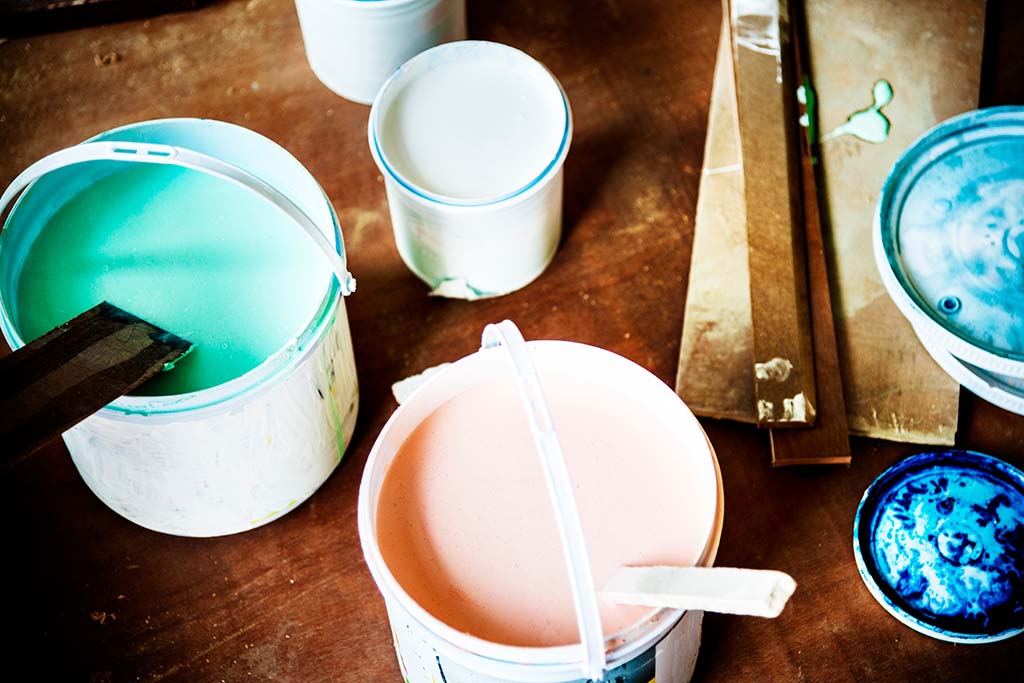
Leftover Paint Lives to Tell Another Tale
You might have wondered, how long does paint last? It’s not just about the color drying on your walls but also about that extra can sitting in your garage. Paint isn’t immortal; it has a shelf life.
While a can of paint might seem like it’ll last indefinitely, various factors determine its longevity. Paint expiration dates are based on the type of paint you have, the chemicals it contains, and how you store it. Typically, unopened paints can last up to 15 years when stored correctly, but is that always the case? Let’s uncover the mystery of paint’s lifespan.
Now, what happens when you pop that can open? The clock starts ticking a bit faster. Once exposed to air, paint begins to dry out and its properties can change. For instance, if you’ve ever opened a can of paint and found a crusty layer on top, it’s been exposed to air for too long.
It’s crucial to ensure a tight seal after every use – a simple trick is using plastic wrap under the lid for an extra layer of protection. This helps maintain the paint’s quality and extend its life after opening.

All paints are not created equal. While some are made to last, others may not—and knowing the difference can save you a lot of hassle with your paint job.
Different types have varied lifespans:
Water-Based Paint: Known for its easy clean-up and quick drying time, water-based paint is a favorite for many DIYers. When it comes to longevity, especially when leftover, you can expect it to remain usable for several years if stored properly. These include latex paints, acrylics, and vinyls.
Oil-Based Paint: This type of paint boasts durability and a glossy finish. When compared to its water-based counterpart, oil-based paint often has a longer shelf life. However, once opened, its consistency can change quickly if not sealed properly.
Chalk Paint & Milk Paint: Unique in their finish and application, these paints offer beautiful matte looks. Derived from milk protein, milk paint has a shorter shelf life, while chalk paint tends to last longer.
Ever had that moment when you step into a room and are immediately greeted by the unmistakable odor of old paint? It’s not the most welcoming scent, and often, it’s a sign of paint that hasn’t been stored properly. Storing your paint correctly is paramount to its longevity and effectiveness. Here’s a handy checklist to guide you:
Ideal Conditions: Always store your paint in a dry, cool place, shielded from direct sunlight and extreme temperatures.
Avoid Extremes: Freezing cold or sweltering heat can seriously impact your paint. Both can alter its consistency, rendering it ineffective or even unusable.
Tight Seal: After using paint, ensure the lid is secured tightly. This helps prevent exposure to air and potential contaminants that make paint go bad more quickly.
Reduce Air Space: If you have a small amount of paint left, consider transferring it to a smaller container. This minimizes air space and helps preserve the paint’s quality.
Beware of Bacterial Growth: Opened cans of paint can be a hotspot for bacterial growth, which changes both the paint’s texture and smell. Regularly check your stored paint for any signs of this.
While paint doesn’t have a stamped expiry date, remember that it does degrade over time, especially once opened. Following the above guidelines can help ensure you’re greeted with a fresh scent the next time you open that paint can.
So, how can you tell if that old can of paint is still good? Paint doesn’t sour like milk, but there are signs it’s past its prime. If your paint has separated into layers that can’t be mixed back together with a good stir, it’s time to toss it.
A rancid smell is another dead giveaway. This indicates bacterial growth, which can be harmful not just to your walls, but potentially to your health. Changes in the paint’s consistency, appearance of mold, or any other anomalies are clear indications the paint is no longer fit for use.
Leftover paint isn’t just an afterthought; it’s a goldmine of potential. From touch-ups to artsy projects, there’s a lot you can achieve with that extra paint.
A small scuff on the wall? No need to repaint the entire room, just touch it up. Or, get creative and use leftover colors for craft projects. Moreover, recycling paint is an eco-friendly approach.
Wasting paint doesn’t just hit your wallet, but it also has a profound environmental impact. Many communities offer paint recycling programs, turning old paint into new, thus reducing environmental waste and promoting sustainability.
We’ve explored the fascinating realm of paint, uncovering its secrets of longevity and the art of proper storage. The ultimate lesson? By giving it the love it deserves, paint can endure, saving you money and minimizing waste.
Ready to start your next project with the perfect colors and finishes? From interior home painting to exterior commercial paint projects, our team is here to help. Reach out to our expert team at BCI. Contact us today and let’s paint a brighter, more durable future together.